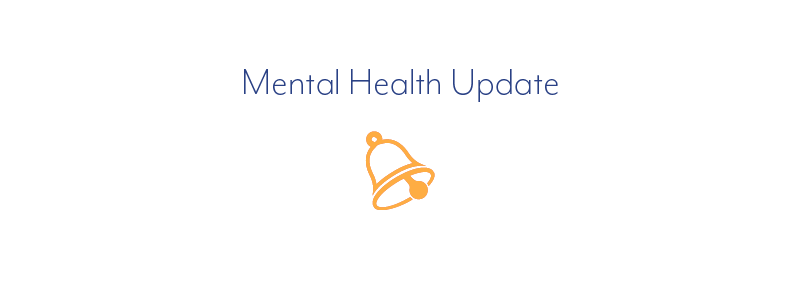Mental Health Update

MH Update – 7/9/20 – Support for White Paper on Telehealth and Call for Rapid Approval of Temporary Telehealth Waiver
A very important White Paper was just published by the Community Health Care Association of NYS and the NYS Council for Communty Behavioral Healthcare regarding the importance of creating permanent changes to telehealth regulation. This is consistent with the Governor’s call for reforms that will positively impact New York post Covid.
Many of our MHA members have strongly supported the movement around telehealth and have noted that many individuals have responded positively to that modality. There will always be the need for direct engagement in our field but a hybrid that is inclusive of telehealth and in person services will be the wave of the future to address individual needs.
Consistent with that approach, it is not fair to providers, loved ones and their families that telehealth waivers are determined hours before they are set to expire. Many of members were waiting nervously on Monday night to find out if the waiver would be approved that would get us through to August 6th. Thankfully it was approved. Lets hope that they don’t have to wait till August 5th to find out about the next waiver approval.
In an era where the insidiousness of COVID is impacting mental health so dramatically and many counties/providers are dealing with the likes of twenty percent withholds, we need innovation and creativity that MHAs and other providers are so good at doing. We need the State to help us support our loved ones by making sure temporary waivers are approved and to restructure our system as recommended in this White Paper. Most importantly we need to raise the visibility of the 20% withhold and let people know the pain and devastation that it will cause to our loved ones if we do not receive adequate unrestricted funding in the next Federal stimulus package.
Glenn Liebman
CEO, MHANYS
Primary Care, Behavioral Health Providers Urge Measures To Sustain Telehealth Access Post-Pandemic
Crain’s Health Pulse July 9, 2020
The Community Health Care Association of New York State and the New York State Council for Community Behavioral Healthcare are calling on policymakers to make permanent telehealth measures that have been implemented during the Covid-19 crisis.
The advocacy groups say doing so will help to address health disparities and barriers to care, aid in preventing avoidable conditions as well as higher costs, and ensure the financial stability of safety-net providers.
The groups recommend that, post-pandemic, the state should continue to support a full range of telehealth modalities, including reimbursement for telephone visits and expanded Wi-Fi and cellular service in urban areas. They also urge keeping telehealth’s use at the discretion of clinicians in collaboration with clients, based on individual patient needs and capacity.
Additionally, the groups are calling on elected officials to maximize regulatory flexibility. That includes continuing to expand the list of licensed practitioners allowed to provide such care, not requiring in-person visits before remote visits, and investing in workforce training and research to establish where telehealth is most impactful. It also includes reconsidering certificate-of-need requirements and whether certain safety-net providers need separate applications for extension sites when telehealth is a significant component of their service delivery model.
Finally, the groups stress that telehealth visits should be reimbursed on par with in-person visits, and a capitated alternative payment model could eliminate the need for the state to count and pay for each different visit type and care delivery modality.
“It is important to think about how telehealth can promote integration of behavioral health and primary care, and how that’s really been important during the pandemic,” said Rose Duhan, president and CEO of the Community Health Care Association of New York State.
As New York moves ahead in its phased reopening, continued support for virtual care is critical, Duhan said.
“We think it can be really effective in managing chronic conditions,” she said. “As we go into flu season, it can also be a way to help reduce the spread of other types of contagious infections.”
Initial outcomes have proved promising, the advocacy groups say. Expanded regulatory relief and measures for telehealth have resulted in immediate improvements in access to care.
The Community Health Care Association of New York State reports that 88% of the state’s federally qualified health centers now deliver care remotely, up from just 35% in 2018. And a recent survey by the New York State Council for Community Behavioral Healthcare found that telehealth comprised 90% of visits and 86% of revenue for behavioral health providers.
Early data indicate fewer no-shows for appointments as a result of virtual care and high patient satisfaction, particularly when it comes to telephone visits, the groups said. And telehealth visits have been a financial lifeline for providers that reported staggering declines in in-person care as a result of the pandemic and tens of millions of dollars in losses a week in some cases.
“This type of innovation in health care was due,” said Lauri Cole, executive director of the New York State Council for Community Behavioral Healthcare.
“Now the challenge is, how can we ensure that all the providers that want it have the means, financial and otherwise, to capitalize on it?”
Cole said that holds especially true for behavioral health providers, which already operated on slim margins and now are tending to three pandemics at once: the opioid crisis, increased rates of suicide and Covid-19.
“We need every tool at our disposal,” she said. “Telehealth doesn’t replace anything. It simply enhances the toolbox of a clinician or staff person to be able to reach out and provide service needs.”
The goal is to influence and inform decision makers to not be afraid of telehealth as the current crisis winds down, she said. —Jennifer Henderson